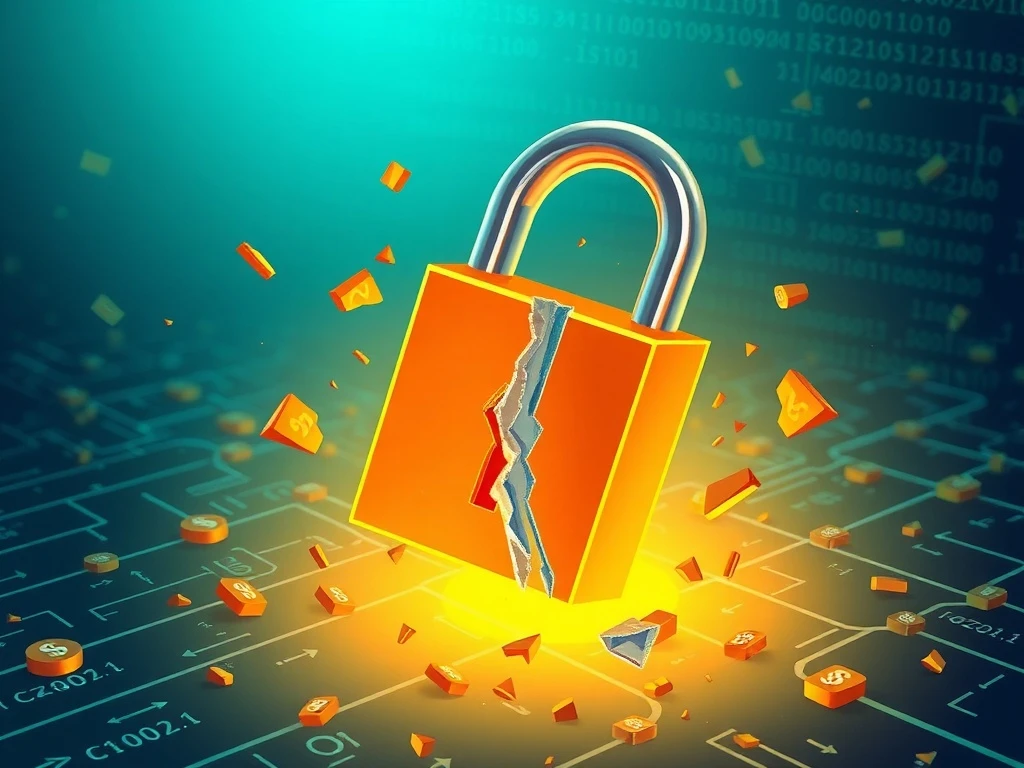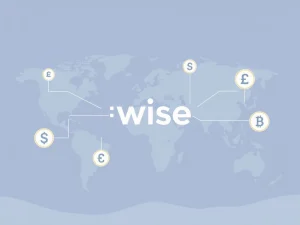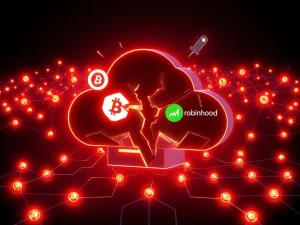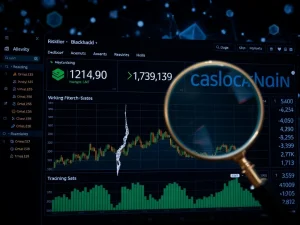Alarming RWA Exploits Surge: $14.6M Lost to Blockchain Security Breaches in H1 2025

The cryptocurrency world faces a growing challenge. Specifically, real-world asset (RWA) protocols are under increasing attack. RWA exploits have surged, causing significant financial losses. This trend highlights evolving threats within the blockchain ecosystem. Therefore, understanding these vulnerabilities is crucial for investors and developers alike.
Understanding Real-World Asset Tokenization
Real-world asset tokenization transforms tangible and financial assets into digital tokens on a blockchain. This process increases investor accessibility. It also expands trading opportunities for various assets. For instance, real estate, fine art, and even private credit become more liquid. However, this innovation also introduces new security complexities. The immutable blockchain ledger underpins these tokens. Yet, their connection to off-chain assets creates unique risks. Consequently, hackers are now targeting this burgeoning sector. They seek to exploit these new vulnerabilities.
The Alarming Rise of RWA Exploits and Crypto Hacks
RWA exploits have reached alarming levels in the first half of 2025. Losses totaled $14.6 million during this period. This figure surpasses the entire $6 million lost to RWA protocol exploits in 2024. Furthermore, it could exceed the $17.9 million lost in 2023. Blockchain security firm CertiK provided these figures. Their report, shared with Crypto News Insights, underscores a clear shift. The threat landscape for RWAs has transformed significantly. These exploits largely stem from on-chain and operational failures. This indicates a new focus for malicious actors. Thus, the industry must adapt its defense strategies.
The rise in malicious activity coincides with rapid market growth. The RWA market surged over 260% in H1 2025. It reached a total valuation of over $23 billion by June 5. Binance Research reported this impressive growth. Tokenized private credit leads this boom. It accounts for about 58% of the market share. Tokenized US Treasury debt follows with 34%. Major industry players drive this participation. Regulatory frameworks are also becoming clearer. This increased adoption, however, creates a larger attack surface. Therefore, enhanced blockchain security measures are essential.
Hybrid Security Risks in Real-World Asset Tokenization
Real-world asset tokenization introduces complex, hybrid security challenges. An RWA token’s value relies on an off-chain asset. This expands the attack surface beyond just smart contracts. CertiK’s report identifies a five-layer security stack. Each component presents a potential vulnerability. Key risks emerge from the interaction between on-chain and off-chain processes. Off-chain processes involve human actors. They are subject to legal interpretation. Also, they follow operational workflows. This creates unique points of failure. As a result, new types of exploits become possible.
Specific risks include:
- Oracle manipulation: Attackers can feed false price data.
- Custodial and counterparty failures: Issues with asset holders or intermediaries.
- Unenforceability of legal frameworks: Legal protections may fall short.
- Fraudulent proof of reserves attestations: Misrepresentation of underlying assets.
These hybrid risks demand comprehensive security strategies. Traditional smart contract audits are no longer sufficient. Protocols must secure both their digital and physical layers. Consequently, a multi-faceted approach to security is paramount.

Notable RWA Protocol Exploits of 2025
Several high-profile incidents highlight the severity of these crypto hacks. Zoth, an RWA restaking protocol, suffered the largest exploit in 2025. It lost $8.5 million on March 21. This was a classic operational security failure. A compromised private key led to the breach. In the same month, another attacker exploited a smart contract logic flaw. This allowed them to mint $385,000 worth of assets without sufficient collateral. These incidents demonstrate varied attack vectors. They emphasize the need for robust security across all layers.
Loopscale experienced the second-largest hack. It lost $5.8 million on April 26. This incident involved blockchain oracle price manipulation. Fortunately, the protocol recovered $2.8 million by April 29. This recovery offers a positive note amidst the losses. Yet, it underscores the persistent threat of oracle attacks. These events serve as stark reminders. They highlight the urgent need for enhanced vigilance and proactive security measures.

Insights from the CertiK Report and Mitigating Future Threats
The CertiK report provides critical insights. It emphasizes the “evolving” threat landscape. Real-world asset protocols present a larger attack surface. This is due to their hybrid nature. Hackers are shifting their focus. They are moving from purely code-based exploits to operational and off-chain vulnerabilities. Therefore, security strategies must adapt. Protocols need to implement comprehensive security audits. These audits should cover smart contracts and off-chain processes. Strong operational security practices are also vital. For example, multi-signature wallets and secure key management are essential. Regular penetration testing can identify weaknesses. Bug bounty programs also encourage ethical hackers to find vulnerabilities. Furthermore, legal frameworks need strengthening. This ensures enforceability of claims on underlying assets. Collaboration between security firms and RWA protocols is key. This collective effort can build a more secure future for tokenized assets. The industry must prioritize security to maintain investor trust. Only then can the RWA sector reach its full potential safely.
The surge in RWA exploits in H1 2025 signals a critical juncture. The growing institutional interest in real-world asset tokenization necessitates robust blockchain security. While the market expands, so do the risks. Proactive measures, comprehensive audits, and continuous vigilance are paramount. This will protect investors and ensure the long-term viability of this innovative sector.









